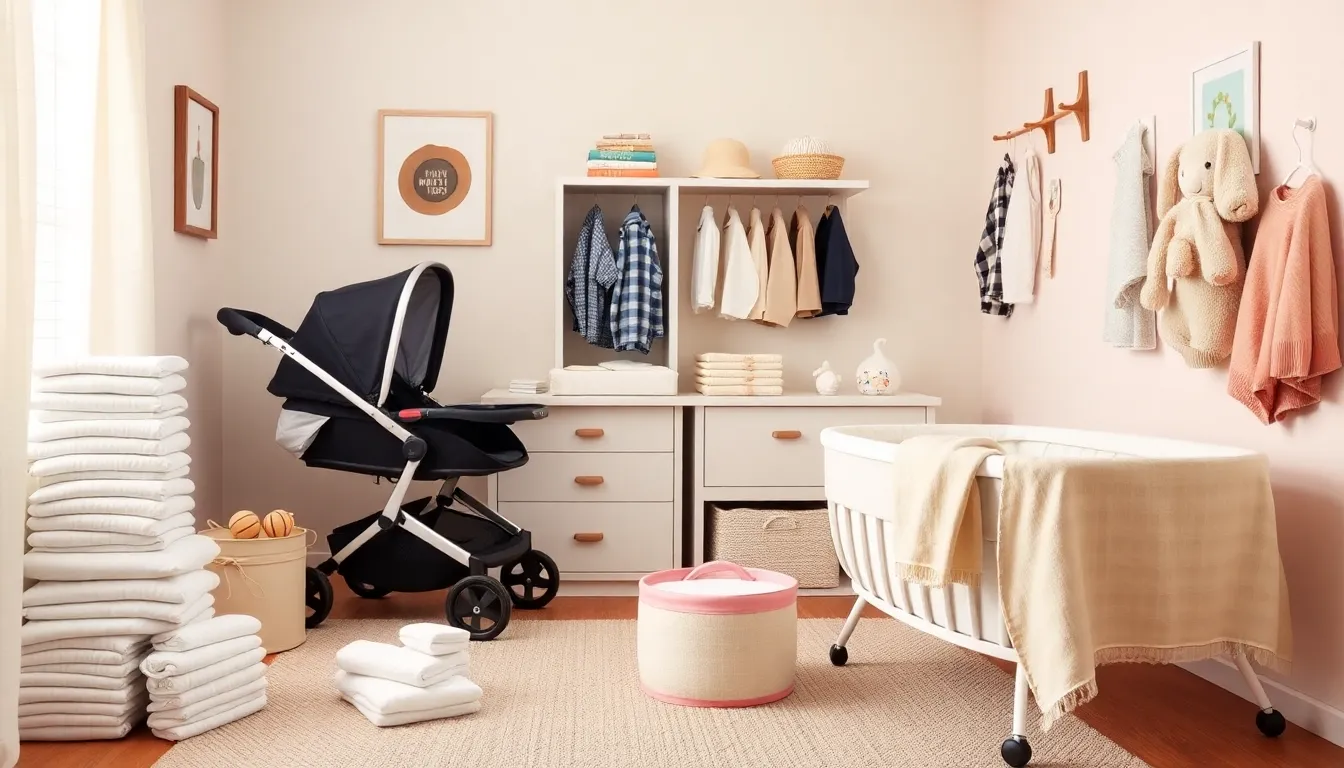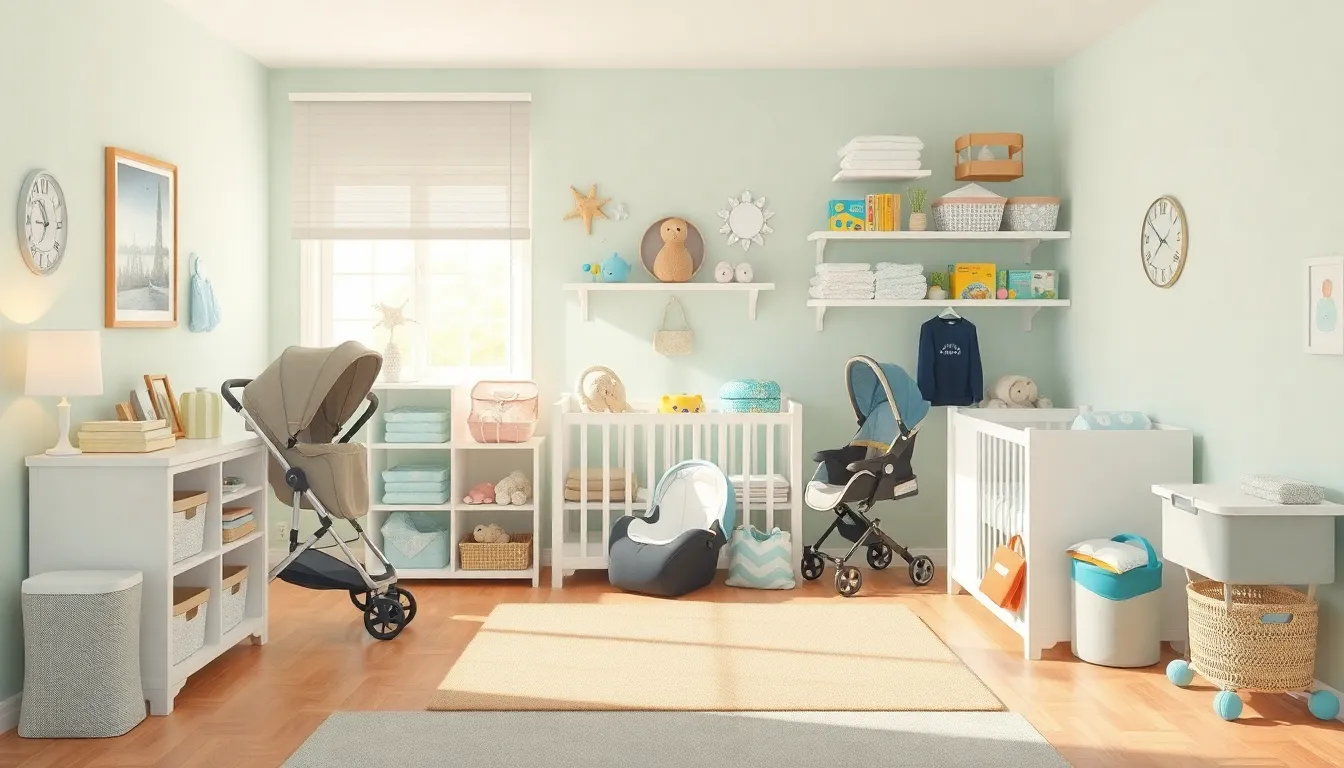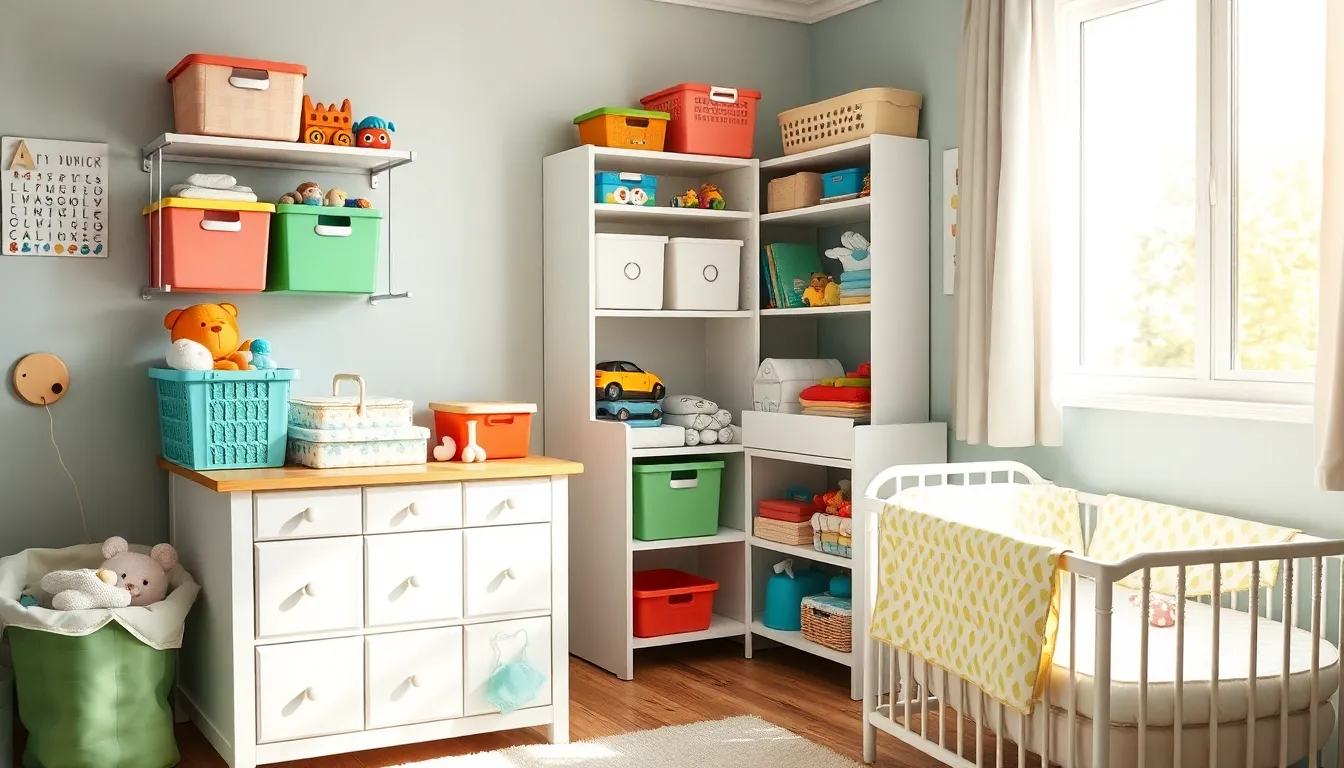Table of Contents
ToggleNavigating the world of baby gear can feel like an Olympic sport. With toys, clothes, and gadgets multiplying faster than a toddler’s tantrum, keeping everything organized is crucial. Imagine stepping on a rogue building block at 2 AM—yikes! A little organization goes a long way in avoiding those late-night surprises.
Importance of Baby Gear Organization
Organizing baby gear plays a crucial role in creating a safe and efficient environment. Safety becomes a primary concern when toys and other items clutter living spaces. Preventing accidents from tripping over scattered toys offers peace of mind for caregivers.
Time-saving benefits arise from an organized space. Quickly locating necessary items reduces stress during busy days. Families experience fewer delays when everything has a designated spot, especially during outings.
Organization also fosters a nurturing environment. Structured spaces encourage an atmosphere of calm, making it easier for parents to focus on their little ones. Children learn about responsibility when they observe parents maintaining order.
Additionally, organization aids in long-term planning. Categorizing gear helps identify what items require replacement or upgrades, facilitating budget management. Clear visibility of supplies ensures families avoid unnecessary purchases.
Creating a defined system strengthens efficiency. Use storage bins for toys and separate sections for clothes and accessories. Assigning designated areas for each type of item streamlines the process of returning them after use.
Investing time in organization contributes to overall well-being. A well-organized space reduces anxiety and enhances productivity for caregivers. Establishing routines around tidying up allows families to enjoy their time together, creating lasting memories.
Essential Baby Gear Items


Organizing baby gear begins with understanding which items are essential to daily routines. Each gear item plays a specific role, contributing to both safety and convenience.
Must-Have Gear for New Parents
Diapers, wipes, and changing mats are foundational tools. Strollers offer mobility and can accommodate multiple functions. Car seats ensure safety during transport, while bassinets provide a secure sleeping environment. Baby carriers facilitate closeness and ease of movement. Additionally, breast pumps and feeding bottles support feeding routines. Toys aid in development, providing entertainment and engagement. Each of these items supports a smooth parenting experience, helping caregivers prepare for everyday challenges.
Seasonal Gear Considerations
Weather changes necessitate specific baby gear adjustments. For colder months, insulated clothing, blankets, and booties keep babies warm. Items like sun hats, lightweight clothing, and swim diapers become essential during warmer seasons. Parents must also consider outdoor gear, such as strollers with canopies for sun protection. Lightweight carriers work well for hikes or walks during pleasant weather. Additionally, multifunctional gear adapts to seasonal needs, allowing for efficient organization and storage solutions. Recognizing these shifts ensures caregivers efficiently prepare for varying climates.
Tips for Effective Baby Gear Organization
Effective organization of baby gear can significantly enhance daily routines. Prioritizing the categorization and implementation of storage solutions simplifies the management of various items.
Categorizing Baby Items
Sorting baby items into specific categories aids in easy access. For instance, grouping diapers, wipes, and changing supplies together streamlines diapering routines. Clothing can be separated by size, making outfit selection quicker. Toys often benefit from being categorized by type or developmental stage. This approach reduces clutter and fosters a sense of responsibility in children. Involve kids in the process by encouraging them to help categorize their toys, promoting ownership of their space.
Storage Solutions for Small Spaces
Finding effective storage solutions in small areas maximizes available space. Utilize vertical storage options like shelves and wall-mounted organizers to keep items off the floor. Baskets or bins can hold toys while fitting neatly under cribs or in closets. Consider multi-functional furniture, such as ottomans with hidden storage, to provide extra seating and organization. Labeling bins ensures everyone knows where items belong, further enhancing organization. Efficient storage methods lead to a more peaceful environment and facilitate smooth daily routines.
Maintaining Organization Over Time
Maintaining an organized space requires ongoing effort. Regular decluttering practices play a vital role in this process.
Regular Decluttering Practices
Set aside time weekly to assess baby gear. Removing outgrown clothes, unused toys, and expired supplies simplifies the space. Focus on items that no longer serve a purpose or have safety concerns. Donate or recycle items when possible, as this contributes to a good cause. Encouraging family members to help fosters teamwork and makes the process faster. Creating a checklist of items to declutter can enhance focus and efficiency during sessions. Regularly revisiting this task prevents clutter from accumulating and keeps the environment safe and enjoyable.
Adapting to Your Growing Baby’s Needs
Consider your baby’s growth and changing needs as they develop. Transition to new storage solutions when necessary, ensuring items match developmental stages. For instance, infants require different gear than toddlers. Review clothing and equipment every few months to identify outdated items. Rotation of toys also keeps the environment fresh and aids in engagement. Integrating open shelving for easy access promotes independence for older babies. Adapting storage strategies empowers caregivers to create a functional, safe environment that evolves with the child.




